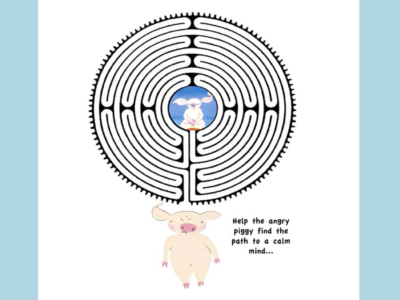What Kinds of Programs Can Buddhist Centers Offer Children?
About This Resource
Details
What kinds of programs can Buddhist centers offer children?
In this excerpt from a sweeping conversation about Theravada practice in everyday life, Buddhadharma asks three teachers what kinds of programs centers can for families and children.
Marcia Rose: The Insight Meditation Society in Barre has had a family retreat for many years, one of the first in the Theravada tradition in the West. It has grown tremendously as people have brought more of their life into their practice, and vice versa. There are now many other family-oriented activities at centers around the country. There’s been a natural evolution of people bringing their family into the center and the forming of parent groups that discuss the dharma in relationship to family life.
Gil Fronsdal: We offer a family program for children once a month, and a lot of thought goes into it. It’s wonderful to have the children in the meditation hall, sometimes running around, sometimes meditating, sometimes listening to stories or doing activities.
Michael Liebenson Grady: We don’t do a lot with children, but for example this Sunday there’s a two-hour workshop for ten- to thirteen-year-olds. There is some sitting and walking for short periods but mostly a lot of discussion of principles, such as ethics and what mindfulness means.
Marcia Rose: There is a young adults’ retreat at the meditation center in Barre, where they can look at their experiences with their friends and family, their feelings, the sensations in their bodies. Many of us teach meditation to younger children and have them do it for just a few minutes. It’s quiet time, time to work with paying attention to sound and breath. Children do that anyway, but we are giving them permission to do so and to bring some attention to their natural experiences. We also do a lot of storytelling and exploration through discussion.
Just as with adults, we are bringing the practice into the whole of their lives-their relationships, their activities, their interests. You need some experience to do that. I’m a mother and was a schoolteacher for many years, so I can relate the dharma to the level of interest of a five-year-old, a fourteen-year-old, or a ten- year-old. When dharma is brought to children, it begins to make a fuller practice life for families.
Many parents have said that after a five-day family retreat they go home and actually sit with their kids. It may only be for three minutes, but they sit with their kids, or they do lovingkindness practices, or discuss certain teachings within the family, such as generosity. Integrating the dharma into their regular lives brings people together.
Michael Liebenson Grady: When you come down to it, all of what we have talked about in terms of family, community and daily life is supported by silent practice. The conditions in silent retreat are rare and precious, and all of us value it and have derived tremendous benefits from practicing in retreat. One of the major fruits to come out of silent practice is deeper samadhi and concentration. Also, there is an emphasis on the continuity of mindfulness. You learn to lead a very simple life, which allows for a lot more space, so you can really pay attention on a moment- to-moment level. Paying attention moment to moment leads to deep insight.




